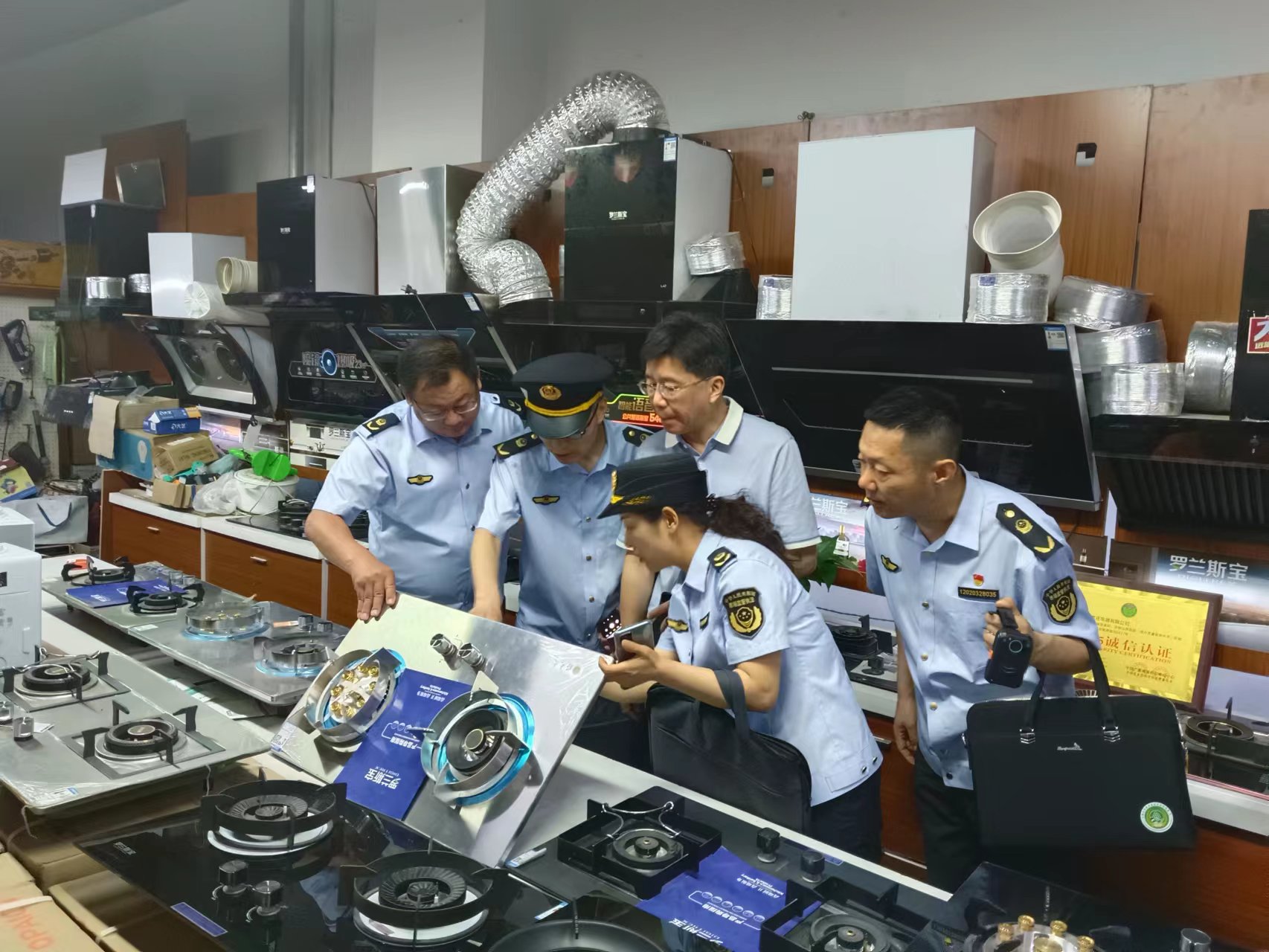新闻中心
拧紧燃气器具“安全阀” 安徽省市场监管系统在行动
中国消费者报合肥讯(记者陶维)记者从安徽省市场监管局获悉,安全阀近期,拧紧该省市场监管系统集中开展燃气器具产品质量排查整治大行动,燃气各地市场监管部门纷纷开展对辖区内燃气具及配件产品摸排、器具督察检查、安徽安全宣传,省市守牢燃气器具质量安全底线,场监拧紧燃气器具“安全阀”。管系
合肥市市场监管局通过召开政策指导会、统行驻点检验机构开展工作等方式,安全阀全面落实气瓶检验单位主体责任,拧紧严把气瓶检验质量关。燃气摸清燃气经营单位底数,器具聚焦重要部位、安徽重点环节,省市全链条排查整治。同时加强宣传引导和教育。发放宣传手册、张贴风险提示海报等,引导消费者科学选购合格燃气器具产品,努力营造社会共治氛围。截至目前,累计摸排燃气灶具生产单位11家,销售单位654家,发现并完成整改问题隐患95个;累计监督抽查燃气器具及配件产品248批次,发现不合格产品23批次;共立案31起,结案15起,案值2.33万元,扣押调压阀42台、家用燃气灶具81台。组织发放、张贴各类燃气器具及配件宣传材料4200余份。

淮北市市场监管人员检查燃气具。安徽省市场监管局供图
淮北市市场监管局向全市燃气器具及相关产品经营单位发告知书,目前已开展检查381次,摸排生产销售单位338家,检查燃气器具生产经销户728家次,发现隐患数量28条,均已责令整改。开展监督抽查47家64批次,对10批次不合格销售单位严格按程序开展后处理整改和案件调查处理,立案8起,结案2起。开展安全宣传教育、警示教育600余次,发放张贴宣传海报、彩页5000余份。
滁州市市场监管局守住安全底线,开展燃气安全大排查。定远县市场监管局展开“拉网式”“兜底式”排查使用管道燃气或瓶装液化气的餐饮经营场所、农贸市场、商住混合体等人员密集场所。截至目前,该市累计检查燃气具、燃气泄漏报警器、减压阀等产品经销门店206家,发现制售不符合安全标准、未按规定要求取得强制性产品认证等违法线索3条,已立案处理1件,并积极向经营单位宣传相关法律法规,督促经营单位落实质量安全主体责任。

六安市市场监管局工作人员排查燃气具。安徽省市场监管局供图
六安市市场监管局已排查流通领域燃气具经营主体418家,发现问题隐患共39条。抽检燃气灶具28批次、液化石油气38批次、燃气用连接软管24批次、瓶装液化石油气调压器28批次、可燃气体探测器5批次。已立案查处9起,没收不合格燃气具29台、不合格燃气调压器66个、不合格燃气软管5个。发放《致全市燃气器具及相关产品经营者的一封信》和《燃气安全与你同行》宣传材料共2000份。

马鞍山市市场监管工作人员检查燃气具。安徽省市场监管局供图
马鞍山市市场监管局发放“家用燃气具消费提示”,印制张贴“燃气具风险提示海报”600余份。组织产品质量安全宣传“进市场”“进农村”活动,培训燃气器具生产销售单位质量安全人员共169名,组织185家销售单位签订《质量安全承诺书》。开展燃气具及配件产品监督抽查21批次,摸排生产销售单位278家并建立监管档案,检查燃气具销售单位279家/次,发现问题32个,没收产品42件,立案11件。
芜湖市市场监管局已检查燃气器具生产单位1家、燃气器具销售单位298家,查办相关违法案件3起,责令7家单位限期整改。共培训监管人员100余名,培训燃气器具质量安全总监、质量安全员40余名,组织专题培训班4个,制作各类手册、海报、图解、视频等宣传产品400余份。
铜陵市市场监管局聚焦重点区域用户,保护弱势群体的燃气使用安全。集中对农村集贸市场开展全覆盖的检查,检查各类边远地区集贸市场47家,发放《燃气消费提示》宣传册1300余份。
池州市市场监管局发布燃气器具产品质量安全提示、全面提升燃气使用人群的防范事故隐患意识。累计检查经营主体1300余家次,发现问题隐患35条,查扣燃气调压器阀门共73个,燃气灶具35台、连接软管5捆、橡胶连接软管8条。完成61批次液化石油气和燃气器具监督抽查,开展培训130余人次。
安庆市市场监管局目前已累计抽检“灶管阀”产品60余批次,暂扣燃气灶具75台,燃气调压阀132个,燃气软管32米。排查燃气具相关产品经营主体527家,发现问题隐患84个。

黄山市市场监管工作人员宣传燃气具安全知识。安徽省市场监管局供图
黄山市市场监管局深入排查,摸清企业底数。目前已摸排352家燃气器具销售单位,发放宣传册2000余份,张贴《燃气安全你我同行》海报600余张,计划抽检燃气器具41组,已抽检22组。
责任编辑:游婕
相关新闻
- 广东举办食品安全与食品产业高质量发展咨询研讨会2026-01-15 20:43
- 北京丰台开展过度包装专项检查2026-01-15 20:10
- 江西成功破译雷竹基因密码2026-01-15 20:01
- 福州严把高考特种设备安全关2026-01-15 19:34
- 杭州举行校园食品安全事故应急演练2026-01-15 18:53
新闻资讯
联系我们
电话:020-123456789
手机:020-123456789
邮箱:admin@aa.com
地址:联系地址联系地址联系地址

